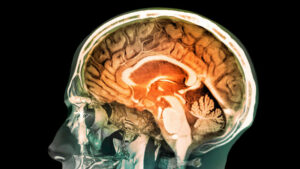Original article from Science
Brain scientists can watch neurons fire and communicate. They can map how brain regions light up during sensation, decision-making, and speech. What they can’t explain is how all this activity gives rise to consciousness. Theories abound, but their advocates often talk past each other and interpret the same set of data differently. “Theories are very flexible,” says Christof Koch, president of the Allen Institute for Brain Science in Seattle, Washington. “Like vampires, they’re very difficult to slay.”

Head-to-head contests are rare in basic science. “It’s a really outlandish project,” says principal investigator Lucia Melloni, a neuroscientist at the Max Planck Institute for Empirical Aesthetics in Frankfurt, Germany. But understanding consciousness has become increasingly important for researchers seeking to communicate with locked-in patients, determine whether artificial intelligence systems can become conscious, or explore whether animals experience consciousness the way humans do. To winnow the theories, TWCF took inspiration from a 1919 experiment in which physicist Arthur Eddington pitted Albert Einstein’s theory of general relativity against Isaac Newton’s gravitational theory. Eddington measured how the Sun’s gravity caused light from nearby stars to shift during a solar eclipse—and Einstein won.
Consciousness, however, is much less easily tested or mathematically defined than gravity. TWCF has identified a half-dozen leading consciousness theories and intends to eventually fund research to test them all. “What we hope for is a process that reduces the number of incorrect theories,” says foundation President Andrew Serazin, who is based in Nassau, Bahamas. “We want to reward people who are courageous in their work, and part of having courage is having the humility to change your mind.”
The first two contenders are the global workspace theory (GWT), championed by Stanislas Dehaene of the Collège de France in Paris, and the integrated information theory (IIT), proposed by Giulio Tononi of the University of Wisconsin in Madison. The GWT says the brain’s prefrontal cortex, which controls higher order cognitive processes like decision-making, acts as a central computer that collects and prioritizes information from sensory input. It then broadcasts the information to other parts of the brain that carry out tasks. Dehaene thinks this selection process is what we perceive as consciousness. By contrast, the IIT proposes that consciousness arises from the interconnectedness of brain networks. The more neurons interact with one another, the more a being feels conscious—even without sensory input. IIT proponents suspect this process occurs in the back of the brain, where neurons connect in a gridlike structure.
To test the schemes, six labs will run experiments with a total of more than 500 participants, costing the foundation $5 million. The labs, in the United States, Germany, the United Kingdom, and China, will use three techniques to record brain activity as volunteers perform consciousness-related tasks: functional magnetic resonance imaging, electroencephalography, and electrocorticography (a form of EEG done during brain surgery, in which electrodes are placed directly on the brain). In one experiment, researchers will measure the brain’s response when a person becomes aware of an image. The GWT predicts the front of the brain will suddenly become active, whereas the IIT says the back of the brain will be consistently active.
Tononi and Dehaene have agreed to parameters for the experiments and have registered their predictions. To avoid conflicts of interest, the scientists will neither collect nor interpret the data. If the results appear to disprove one theory, each has agreed to admit he was wrong—at least to some extent.
The project has drawn criticism, mostly because it includes the IIT. Anil Seth, a neuroscientist at the University of Sussex in Brighton, U.K., says the theory is too philosophical—attempting to explain why consciousness exists, rather than how the brain determines whether a stimulus is worthy of conscious attention—to be directly testable. “I don’t think [the competition] will do what it says on the tin,” he says. Tononi himself doubts the experiments could rule out all aspects of his theory, although he says they could “make our life more difficult.”
Koch, who supports the IIT, disagrees with Seth’s assessment. “Of course it’s testable,” he says. He points to clinical trials in which researchers stimulate the brains of people in minimally conscious states such as comas or under anesthesia, triggering brain activity patterns that suggest neurons interconnect in the way the IIT predicts.
Despite his misgivings about the project’s prospect for a decisive answer, Seth says it will spark discussion and collaboration among scientific rivals. “That itself is to be applauded,” he says.
